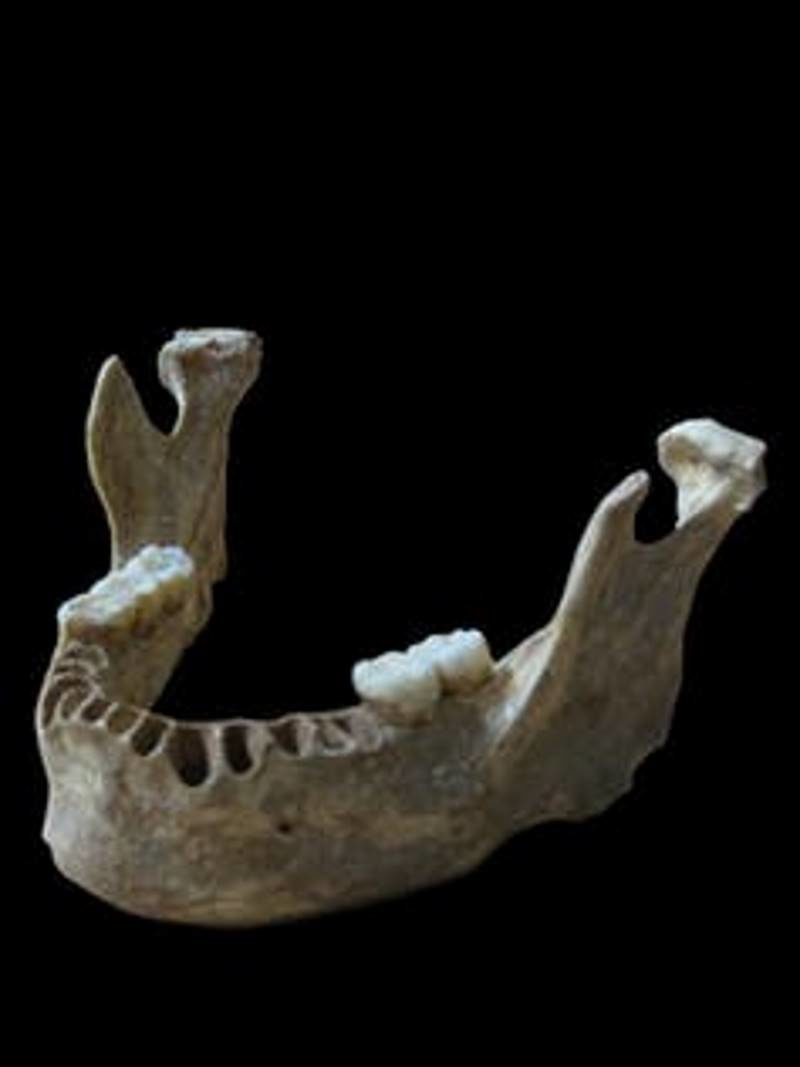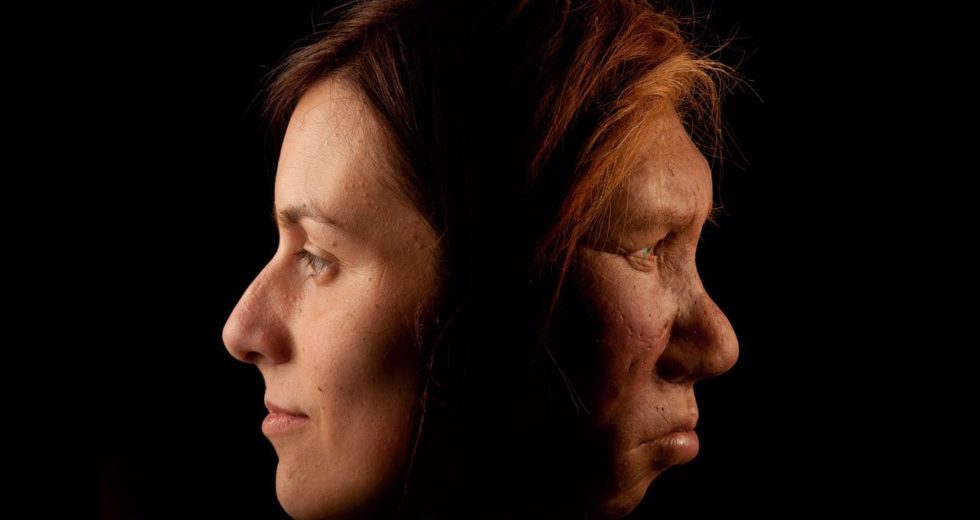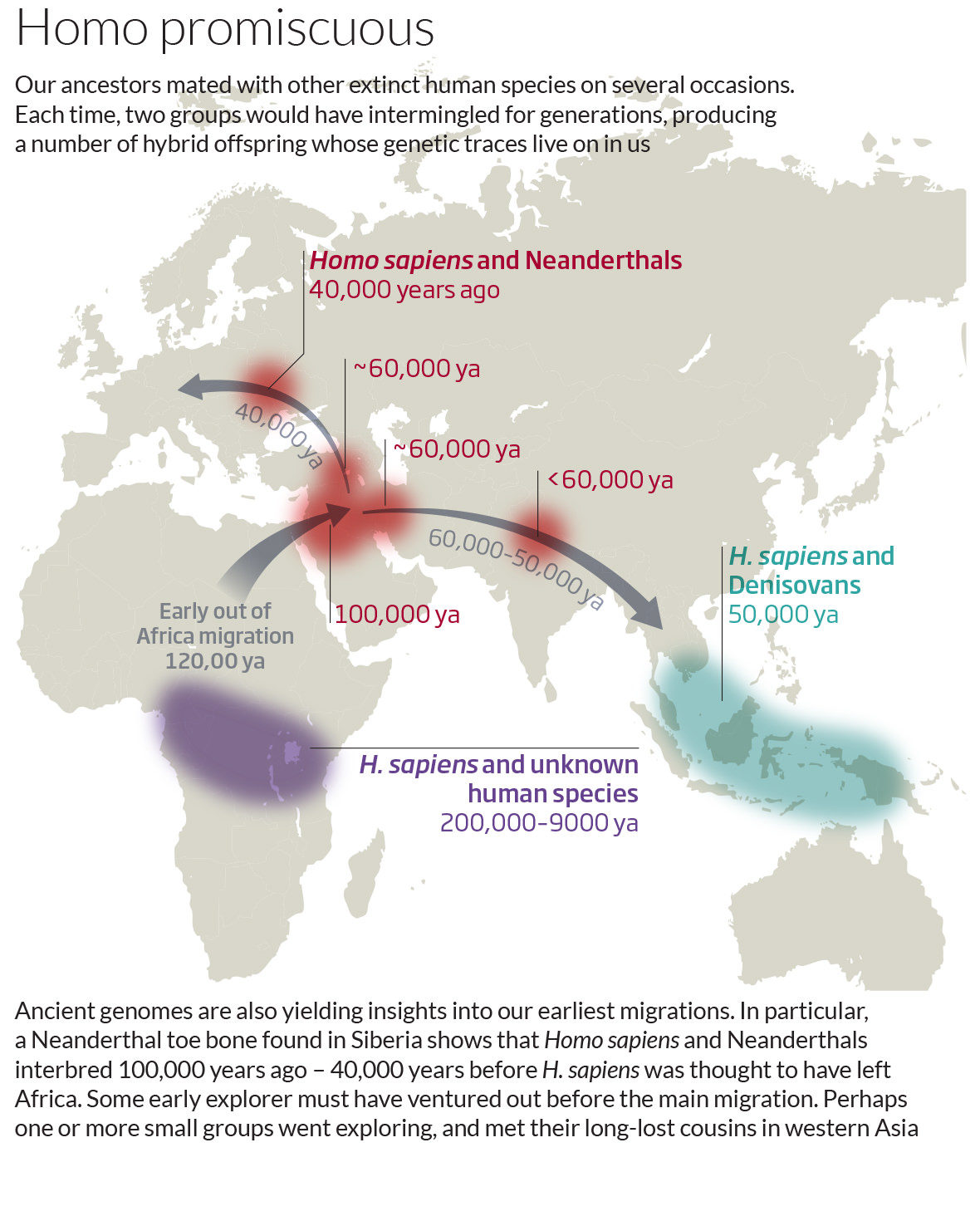Until about five years ago, one feature united the ancient human species that once walked the Earth: all were well and truly extinct. The Denisovans vanished from Eurasia around 50,000 years ago and the Neanderthals some 10,000 years later, leaving only Homo sapiens. Others went the same way much earlier, leaving just a few fossils - if that - to tell their story. But we now know these species are not entirely gone. Traces of them are buried within my cells and yours.
By having sex with our direct ancestors, ancient human species made sure they left a genetic legacy that survives to this day, one with a greater significance than previously suspected. People of non-African descent inherit between 2 and 4 per cent of their DNA from Neanderthals; indigenous Melanesians get 3 to 4 per cent of theirs from Denisovans; and some hunter-gatherer groups in central Africa get a small proportion from species we haven't even identified yet - we just know they existed. Crucially, recent studies have revealed that if you combine all the ancient DNA in living humans, you could recover a sizeable chunk of the original genomes. A study published this year suggests about 10 per cent of the Denisovan genome is still "alive", mainly in people from Papua New Guinea. It also suggests that about 40 per cent of the Neanderthal genome can be put together from the bits living people carry. Joshua Akey of the University of Washington in Seattle thinks that figure may creep up with more research.
The last few years of genetic decoding have revealed the surprising ways in which we express this legacy. It is partly responsible for the physical variation in modern humans - red hair and freckles have links with Neanderthal DNA, for instance - and it affects our health.
And hidden in all this is a far bigger story: genes from our extinct cousins helped us conquer the planet. Without them, our ancestors may not have coped with unfamiliar diseases, thrived in the thin air of the high Tibetan plateau, or withstood the chilly winds of the Arctic.
These findings are testament to how much we owe humanity's hybrids. And yet we know very little about who they were and how they coexisted with our ancestors. According to the latest estimates, our species mingled with other humans at least half a dozen times. On each occasion, it's likely that groups mixed and mated repeatedly over a number of generations, says Akey, producing many hybrid children.
It might be significant that there is very little Neanderthal and Denisovan DNA on our X chromosome. This could be explained if matings were largely one-way, with male Neanderthals and Denisovans mating with female H. sapiens, who then raised the hybrid children in H. sapiens societies. Alternatively, the X chromosome's lack of ancient DNA might be because hybrids suffered fertility issues: genes responsible for reduced male fertility are often found on the X chromosome. Or both explanations could be true. "[They] are not mutually exclusive," says Sriram Sankararaman at the University of California in Los Angeles.
Infertility might not have been purely down to genetics, of course. Did the hybrids struggle to fit in socially because of their appearance? An astonishing 40,000-year-old human male jaw found in Romania could offer clues. Last year, it was found to have 9 per cent Neanderthal DNA - much more than the 2 to 4 per cent that most living non-Africans have. Geneticists say the jaw's owner must have been separated by a mere handful of generations from a Neanderthal-human hybrid. The hybrid may even have been the man's great-great grandparent.

This is perhaps not surprising, given emerging evidence that hybrids were a feature of human societies from the very beginning. A recent study of some hunter-gatherer tribes in Africa hints that mating between early H. sapiens and other ancient humans on the continent - the African equivalents of Neanderthals and Denisovans - was commonplace. This might even have given our ancestors some of the traits that allowed them to withstand the dramatic swings in the region's environment during the Pleistocene.
Statistical analysis of the hunter-gatherer genomes suggests this interbreeding ended only about 9000 years ago. That fits nicely with 12,000-year-old skulls discovered in Nigeria that have a mix of archaic and modern features, says Sarah Tishkoff at the University of Pennsylvania. Those skulls aside, though, we have no fossils of the species that lived alongside H. sapiens for nearly 200,000 years. African fossils have so far tended to be much older. Until we find younger ones, these mysterious humans can't be given formal names - even though they might have played a pivotal role in the survival of our species.





Comment: